
- Home
- Travel Packages
- Top Destination
-
Travel Attraction
By Category
Top Attraction

- Travel Agents
- Car Rentals
- Hotels

About Ocean Park Ocean Park is a marine-themed amusement park located in Hong Kong. It covers an area of 91.5 hectares and is divided into two main areas: The Waterfront and The Summit. The park offers a wide range of attractions, including thrill rides, animal exhibits, marine shows, and educational programs. Location and Geographical Overview Ocean Park is situated on the southern side of Hong Kong Island, overlooking the South China Sea. It is easily accessible by public transport, with bus and MTR (Mass Transit Railway) options available for visitors. Opening and Closing Time Ocean Park is open from 10:00 am to 6:00 pm on weekdays and from 10:00 am to 7:00 pm on weekends and public holidays. However, it is always best to check the official website for any changes in operating hours. Entry Fee The entry fee for Ocean Park varies depending on the age of the visitor and any additional services or attractions they wish to access. There are also discounts available for seniors, children, and local residents. Species-Flora/Fauna Availability Ocean Park is home to a wide variety of species, both flora and fauna. Visitors can see animals such as giant pandas, dolphins, sea lions, and many more. The park also has a botanical garden with a diverse collection of plants and trees. Activities Performed There are plenty of activities to enjoy at Ocean Park, including thrill rides like roller coasters and water slides, animal encounters, marine shows, educational programs, and live entertainment. Visitors can also enjoy dining and shopping options throughout the park. Jeep Safari Charges Ocean Park offers a jeep safari experience for visitors to explore the park and see some of the animals up close. The charges for the jeep safari vary depending on the duration of the tour and any additional services included. Age Criterion and Entry Fee The entry fee for Ocean Park is based on the age of the visitor. There are separate rates for males, females, and children. Senior citizens may also qualify for discounted admission. It is advisable to check the official website for the most up-to-date pricing information. Senior Citizen Facilities Ocean Park provides various facilities for senior citizens, including designated rest areas, accessible pathways, and discounts on admission tickets. There are also special programs and events tailored for older visitors to enjoy. Best Time to Visit The best time to visit Ocean Park is during the cooler months of the year, typically from October to April, to avoid the heat and humidity of Hong Kong's summers. Weekdays are generally less crowded than weekends and holidays. Nearby Places to Visit There are several attractions near Ocean Park that visitors may want to explore, such as Repulse Bay, Stanley Market, and Hong Kong's famous theme park, Disneyland. These places offer a variety of sights, shopping, and dining options. Vehicle Parking Facility Ocean Park provides ample parking facilities for visitors arriving by car. There are designated parking lots available near the entrance of the park, with convenient access to the main areas and attractions. Rules and Regulations Visitors to Ocean Park are required to follow certain rules and regulations to ensure the safety and enjoyment of all guests. These include guidelines for behavior, dress code, prohibited items, and restrictions on activities within the park. How to Reach and Other Related Information Visitors can reach Ocean Park easily by taking public transportation, such as buses or the MTR. The park is well-connected to other parts of Hong Kong, making it convenient for tourists and locals alike. For more information on directions, tickets, and park policies, visitors can visit the official Ocean Park website or contact the park directly.
Explore More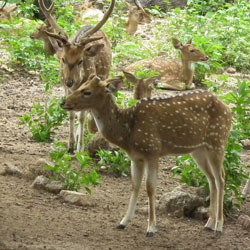
About Nehru Zoological Park Nehru Zoological Park, located in Hyderabad, Telangana, is one of the largest zoos in India. It covers an area of 380 acres and is home to a wide variety of species, both flora, and fauna. The zoo was established in 1959 and is named after Jawaharlal Nehru, the first Prime Minister of India. Location and Geographical Overview Nehru Zoological Park is situated near Mir Alam Tank in the Bahadurpura area of Hyderabad. The park is surrounded by lush greenery and offers a serene environment for both visitors and the animals residing in the zoo. Open and Closing Time The zoo is open to visitors from 8:00 am to 5:00 pm every day of the week, including public holidays. Entry Fee The entry fee for Nehru Zoological Park is INR 50 for adults and INR 30 for children (3-10 years). Foreign tourists are charged INR 100 for entry. Species-Flora/Fauna Availability Nehru Zoological Park houses a diverse range of wildlife, including mammals, birds, reptiles, and amphibians. Visitors can also explore the lush botanical garden featuring a variety of plant species. Activities Performed Visitors to the zoo can enjoy activities such as animal feeding sessions, bird watching, and guided tours. There are also educational programs and interactive exhibitions for both children and adults. Jeep Safari Charges Nehru Zoological Park offers jeep safaris for visitors to explore the vast expanse of the park and observe the animals in their natural habitat. The charges for a jeep safari are INR 500 per person. Age Criterion and Entry Fee Entry fees for Nehru Zoological Park vary based on age: for males above 10 years, the fee is INR 50; for females above 10 years, it is INR 30; and for children between 3-10 years, the fee is INR 20. Children below 3 years of age can enter for free. Senior Citizen Facilities Nehru Zoological Park offers special facilities for senior citizens, including discounted entry fees and wheelchair accessibility to ensure a comfortable and enjoyable visit. Best Time to Visit The best time to visit Nehru Zoological Park is during the winter months, from November to February, when the weather is pleasant and conducive for exploring the zoo and enjoying outdoor activities. Nearby Places to Visit While in Hyderabad, visitors can explore nearby attractions such as Charminar, Golconda Fort, and Hussain Sagar Lake. These iconic landmarks offer a glimpse into the rich history and culture of the city. Vehicle Parking Facility Nehru Zoological Park provides ample parking space for visitors arriving by car or motorcycle. The parking facility is well-maintained and secure, ensuring the safety of vehicles during the visit. Rules and Regulations Visitors are required to follow certain rules and regulations while at Nehru Zoological Park, including refraining from littering, feeding the animals, or causing any harm to the wildlife. Photography is allowed, but using flash is prohibited as it may disturb the animals. How to Reach and Other Related Information Nehru Zoological Park is easily accessible by public transport such as buses and auto-rickshaws. The nearest railway station is the Hyderabad Deccan Railway Station, located approximately 8 km away. For those traveling by air, Rajiv Gandhi International Airport is situated around 25 km from the zoo. Overall, Nehru Zoological Park offers a memorable and educational experience for visitors of all ages, with its diverse wildlife, lush greenery, and engaging activities. Whether you're a nature enthusiast, animal lover, or simply looking to unwind amidst nature, a visit to this iconic zoo in Hyderabad is sure to leave you captivated and enriched.
Explore More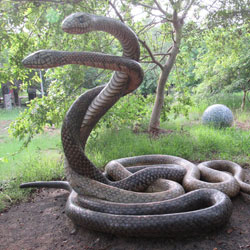
About Snake Park The Snake Park in Chennai is a popular tourist attraction that offers visitors the opportunity to see a wide variety of snake species up close. It is located in the Guindy National Park and is home to a diverse range of flora and fauna in addition to its resident snakes. The park plays a crucial role in educating the public about snakes and their importance in the ecosystem. Location and Geographical Overview The Snake Park is located in Guindy, which is a neighborhood in the southwestern part of Chennai, Tamil Nadu. It is situated within the Guindy National Park, which is one of the smallest national parks in India but boasts a rich biodiversity. The park is easily accessible by road and is a short drive from the city center. Open and Closing Time The Snake Park is open to visitors from 8:30 AM to 5:30 PM every day of the week, including weekends and public holidays. It is advisable to arrive early to make the most of your visit and avoid the crowds. Entry Fee The entry fee to the Snake Park is Rs. 20 for adults and Rs. 10 for children. Senior citizens and students with valid ID cards are eligible for a discounted rate of Rs. 10. Children under the age of 5 are allowed entry free of charge. Species-Flora/Fauna Availability In addition to a wide variety of snake species, the Snake Park is home to a diverse range of flora and fauna. Visitors can see different types of trees, plants, and animals indigenous to the region, making it a great destination for nature lovers. Activities Performed Visitors to the Snake Park can participate in a range of activities, including guided tours, snake shows, and educational demonstrations. The park also offers interactive exhibits and informative displays that teach visitors about the importance of snakes in the ecosystem. Jeep Safari Charges The Snake Park offers a thrilling jeep safari experience for visitors who want to explore the surrounding wilderness. The charges for a jeep safari vary depending on the duration and route chosen, with prices starting at Rs. 500 per person. Age Criterion and Entry Fee Visitors of all ages are welcome at the Snake Park. The entry fee for male and female visitors is Rs. 20, while children aged 5-12 are charged Rs. 10. Children under 5 are allowed free entry. Senior citizens aged 60 and above can enter at a discounted rate of Rs. 10. Senior Citizen Facilities The Snake Park is accessible for senior citizens and offers facilities such as seating areas, restrooms, and shaded spots for resting. Wheelchair access is available, and staff members are on hand to assist elderly visitors as needed. Best Time to Visit The best time to visit the Snake Park is during the cooler months of the year, from November to March. The weather is pleasant, and the snakes are more active during this time, making it an ideal time for viewing them in their natural habitat. Nearby Places to Visit There are several attractions near the Snake Park that visitors can explore, such as the Guindy National Park, Guindy Race Course, and the Madras War Cemetery. The historic Guindy Lodge and Raj Bhavan are also worth a visit. Vehicle Parking Facility The Snake Park offers ample parking space for visitors who arrive by car or motorcycle. The parking area is secure and monitored by staff members to ensure the safety of vehicles and belongings. Rules and Regulations Visitors to the Snake Park are required to follow certain rules and regulations to ensure the safety of themselves and the wildlife. Some of the rules include not feeding the animals, not littering, and not disturbing the snakes or other creatures in the park. How to Reach and Other Related Information The Snake Park is easily accessible by road from various parts of Chennai. Visitors can take a taxi, auto-rickshaw, or public bus to reach the park. The nearest railway station is Guindy, which is just a short distance away. It is advisable to plan your visit in advance and check for any updates or changes in the park's timings or regulations.
Explore More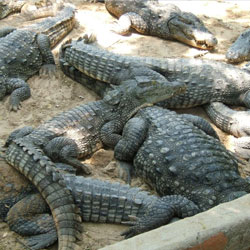
About Crocodile Bank The Madras Crocodile Bank Trust and Centre for Herpetology, commonly known as the Crocodile Bank, is a reptile zoo and research center located in Chennai, Tamil Nadu. It was established in 1976 by herpetologist Romulus Whitaker and is home to a large collection of reptiles, including crocodiles, alligators, snakes, and turtles. The Crocodile Bank is dedicated to conservation efforts and educating the public about these fascinating creatures. Location and Geographical Overview The Crocodile Bank is located in the town of Vadanemmeli, about 40 kilometers south of Chennai. Situated along the East Coast Road, the center is easily accessible by road. The lush green surroundings and proximity to the Bay of Bengal make it a picturesque location for visitors to enjoy. Open and Closing Time The Crocodile Bank is open to visitors from 8:30 am to 5:30 pm every day of the week, including weekends and holidays. It is advisable to arrive early to make the most of your visit and avoid the heat of the afternoon. Entry Fee The entry fee for adults is Rs. 50, while children under 10 years of age can enter for Rs. 30. Students with a valid ID card can avail of a discounted rate of Rs. 30. Foreign tourists are charged Rs. 200 for entry. Species-Flora/Fauna Availability The Crocodile Bank is home to a diverse range of reptiles, including crocodiles, alligators, snakes, and turtles. Visitors can learn about these fascinating creatures and their habitats through interactive exhibits and educational displays. The center also boasts a variety of native flora that adds to the natural beauty of the surroundings. Activities Performed Visitors to the Crocodile Bank can enjoy a range of activities, including guided tours, snake handling demonstrations, and feeding sessions for various reptiles. The center also offers educational programs for schools and groups, as well as research opportunities for students and scholars interested in herpetology. Jeep Safari Charges The Crocodile Bank offers a thrilling jeep safari through the surrounding forests and wetlands, allowing visitors to spot wildlife in their natural habitat. The safari charges vary depending on the duration and distance covered, with rates starting at Rs. 500 per person. Age Criterion and Entry Fee For males and females, the entry fee remains the same as mentioned earlier. Children under 10 years of age can enter for Rs. 30. Senior citizens are also charged Rs. 30 for entry to the Crocodile Bank. Senior Citizen Facilities Senior citizens visiting the Crocodile Bank can avail of special facilities, including designated seating areas, wheelchair access, and discounts on entry fees. The staff at the center are trained to assist elderly visitors and ensure their comfort during their visit. Best Time to Visit The best time to visit the Crocodile Bank is during the cooler months of the year, from November to February. The weather is more pleasant during this time, making it ideal for exploring the outdoor exhibits and enjoying the jeep safari. Avoid visiting during the peak summer months when temperatures can soar. Nearby Places to Visit Located along the scenic East Coast Road, the Crocodile Bank is close to several other attractions, including Mahabalipuram, a UNESCO World Heritage Site known for its ancient temples and rock carvings. Visitors can also explore the coastal town of Pondicherry, famous for its French colonial architecture and tranquil beaches. Vehicle Parking Facility The Crocodile Bank offers ample parking space for visitors arriving by car or motorcycle. The parking area is well-maintained and secure, providing peace of mind while you explore the center and its surroundings. Rules and Regulations While visiting the Crocodile Bank, visitors are expected to follow certain rules and regulations to ensure their safety and the well-being of the animals. This includes refraining from feeding or disturbing the animals, maintaining a safe distance from enclosures, and disposing of waste in designated bins. Smoking and littering are strictly prohibited on the premises. How to Reach and Other Related Information The Crocodile Bank is easily accessible by road from Chennai, with regular bus services and taxis available for transportation. For those driving to the center, follow the East Coast Road towards Mahabalipuram and look out for signposts indicating the entrance to the Crocodile Bank. The nearest railway station is at Chengalpattu, approximately 30 kilometers away, and the nearest airport is Chennai International Airport, about 45 kilometers from the center. Plan your visit to the Crocodile Bank and immerse yourself in the fascinating world of reptiles and conservation. Enjoy a day surrounded by nature and learn about these incredible creatures while supporting important conservation efforts.
Explore More
About SeaWorld Orlando SeaWorld Orlando is a popular marine theme park located in Orlando, Florida. It is known for its interactive experiences with marine animals, thrilling rides, and educational shows. The park is operated by SeaWorld Parks & Entertainment and offers a unique opportunity to learn about marine life and conservation efforts. Location and Geographical Overview SeaWorld Orlando is situated at 7007 Sea World Dr, Orlando, FL 32821, United States. It is conveniently located near the International Drive tourist district and is easily accessible from major highways in the area. Open and Closing Time SeaWorld Orlando typically opens at 10:00 AM and closes at 6:00 PM. However, the park hours may vary depending on the time of year and special events. Entry Fee The entry fee for SeaWorld Orlando varies depending on the age of the visitor and any special promotions or discounts that may be available. It is recommended to check the official website for current pricing information. Species-Flora/Fauna Availability SeaWorld Orlando is home to a wide variety of marine species, including dolphins, whales, sea lions, and penguins. The park also features a diverse collection of flora, including tropical plants and colorful flowers. Activities Performed Visitors to SeaWorld Orlando can enjoy a range of activities, including interactive exhibits, live shows, thrill rides, and behind-the-scenes tours. Some of the most popular attractions include the Shamu Stadium, Manta roller coaster, and Antarctica: Empire of the Penguin exhibit. Jeep Safari Charges SeaWorld Orlando does not offer a jeep safari experience. However, the park does offer other exciting animal encounters, such as dolphin swim programs and animal feeding experiences. Age Criterion and Entry Fee SeaWorld Orlando typically charges different entry fees based on the age of the visitor. Children under a certain age may be admitted for free, while adults and seniors may have to pay a regular admission fee. It is recommended to check the official website for current pricing information and age restrictions. Senior Citizen Facilities SeaWorld Orlando offers special facilities for senior citizens, including designated seating areas, handicap access, and discounted admission for guests over a certain age. Senior citizens can also enjoy special events and programs designed specifically for their enjoyment. Best Time to Visit The best time to visit SeaWorld Orlando is typically during the cooler months of the year, such as fall and winter. The park is less crowded during these times, allowing visitors to enjoy shorter wait times for attractions and shows. Nearby Places to Visit SeaWorld Orlando is located near other popular tourist destinations in Orlando, such as Walt Disney World and Universal Studios. Visitors can easily explore these nearby attractions and enjoy a full day of fun and excitement in the area. Vehicle Parking Facility SeaWorld Orlando offers a convenient vehicle parking facility for guests, with ample parking spaces available for cars, RVs, and buses. Parking fees may apply, so it is recommended to check the official website for current pricing information. Rules and Regulations Visitors to SeaWorld Orlando are expected to follow certain rules and regulations to ensure the safety and well-being of all guests and animals. Some common rules include no outside food or drinks, no smoking in designated areas, and no running or jumping in line. It is important to respect the park's guidelines and regulations at all times. How to Reach and Other Related Information SeaWorld Orlando is easily accessible by car, bus, or taxi from the Orlando area. The park is located just off Interstate 4 and is well-signposted from major highways. Visitors can also use rideshare services or public transportation to reach the park. For more information on how to reach SeaWorld Orlando and other related information, it is recommended to check the official website or contact the park directly.
Explore More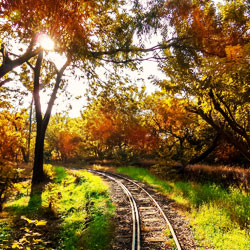
About Sanjay Gandhi National Park The Sanjay Gandhi National Park is a lush green paradise located in the northern part of Mumbai, India. Covering an area of 104 square kilometers, this national park is one of the most visited parks in the country and is a popular destination for nature lovers, adventure enthusiasts, and wildlife enthusiasts. The park is named after Sanjay Gandhi, the son of former Prime Minister of India, Indira Gandhi. Location and Geographical Overview The Sanjay Gandhi National Park is situated in the suburban district of Mumbai, covering areas of Borivali and Thane. The park is surrounded by hills and forests, providing a serene and peaceful environment for visitors to enjoy nature at its best. The park is home to a variety of flora and fauna, making it a biodiversity hotspot in the region. Open and Closing Time The Sanjay Gandhi National Park is open to visitors from 7:30 am to 6:30 pm every day of the week, including weekends and public holidays. The park closes at 6:30 pm, and visitors are not allowed to enter after this time. Entry Fee The entry fee for the Sanjay Gandhi National Park is INR 68 for adults and INR 38 for children. Senior citizens above the age of 65 can enter the park for free with a valid ID card. Foreign tourists have to pay INR 338 for entry. Species-Flora/Fauna Availability The Sanjay Gandhi National Park is home to a wide variety of flora and fauna. The park is famous for its rich biodiversity, with over 1,300 species of plants, 251 species of birds, 40 species of mammals, and 38 species of reptiles. Some of the animals found in the park include leopards, spotted deer, macaques, langurs, and Indian flying foxes. Activities Performed Visitors to the Sanjay Gandhi National Park can indulge in a range of activities such as nature walks, trekking, picnicking, bird watching, and cycling. The park also offers boating facilities at the Tulsi Lake and Vihar Lake, allowing visitors to enjoy a peaceful boat ride amidst the serene surroundings. Jeep Safari Charges The park also offers jeep safari rides for visitors who want to explore the park's wilderness and spot rare wildlife. The jeep safari charges are INR 800 per person for a 30-minute ride, allowing visitors to get up close and personal with the park's inhabitants. Age Criterion for Male, Female, Children and their Entry Fee The entry fee for the Sanjay Gandhi National Park is INR 68 for male adults, female adults, and children above the age of 5. Children below the age of 5 can enter the park for free. Senior citizens above the age of 65 can enter the park for free with a valid ID card. Senior Citizen Facilities Senior citizens above the age of 65 are entitled to free entry to the Sanjay Gandhi National Park with a valid ID card. The park provides special facilities for senior citizens, including wheelchair accessibility, resting areas, and designated walking trails for a comfortable and enjoyable visit. Best Time to Visit The best time to visit the Sanjay Gandhi National Park is during the winter months of November to February when the weather is pleasant and cool. The park is lush and green during this time, making it ideal for outdoor activities and wildlife spotting. Nearby Places to Visit There are several attractions near the Sanjay Gandhi National Park that visitors can explore, including the Kanheri Caves, a group of ancient Buddhist rock-cut caves dating back to the 1st century BC. Other nearby attractions include the Global Vipassana Pagoda, Film City, and Yeoor Hills. Vehicle Parking Facility The Sanjay Gandhi National Park provides ample parking facilities for visitors, with designated parking areas available near the park's entrance. Visitors can park their cars or bikes securely and conveniently while they explore the park's attractions and activities. Rules and Regulations Visitors to the Sanjay Gandhi National Park are required to follow certain rules and regulations to ensure the safety of wildlife and maintain the park's ecological balance. Some of the rules include not feeding the animals, not littering, not making loud noises, and not plucking flowers or plants. How to Reach and Other Related Information The Sanjay Gandhi National Park is easily accessible by road and public transport. Visitors can take a taxi, bus, or auto-rickshaw to reach the park from various parts of Mumbai. The nearest railway station to the park is Borivali, which is well-connected to other parts of the city. The park also has facilities like restrooms, food stalls, and information centers to cater to the needs of visitors. Overall, the Sanjay Gandhi National Park is a must-visit destination for nature lovers, wildlife enthusiasts, and adventure seekers looking to experience the beauty of Mumbai's natural landscape. With its diverse flora and fauna, exciting activities, and serene surroundings, the park offers a unique and memorable experience for visitors of all ages.
Explore More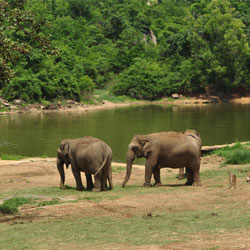
About Bannerghatta National Park Located in Bangalore, Karnataka, the Bannerghatta National Park is a popular destination for nature lovers and wildlife enthusiasts. Spread over 104.27 square kilometers, the park is home to a variety of flora and fauna, making it a must-visit for anyone looking to experience the beauty of nature up close. Location and Geographical Overview The Bannerghatta National Park is situated approximately 22 kilometers south of Bangalore city. It is nestled in the picturesque surroundings of the Champakadhama Hills, providing a serene and peaceful environment for visitors to explore. The park is divided into several sections, including a zoo, a butterfly park, a safari area, and a rescue center. Opening and Closing Time The park is open to visitors from 9:00 AM to 5:00 PM on all days of the week, except for Tuesdays when it remains closed for maintenance. Entry Fee The entry fee for the Bannerghatta National Park varies based on the activities you choose to engage in. The basic entry fee for adults is INR 80, while children have a discounted rate of INR 40. Additional charges apply for activities such as safaris and the butterfly park. Species - Flora/Fauna Availability The park is home to a diverse range of flora and fauna, including various species of plants, trees, birds, mammals, and reptiles. Visitors can spot animals such as tigers, lions, elephants, bears, deer, and more in their natural habitat within the park. Activities Performed Visitors to the Bannerghatta National Park can engage in a variety of activities, including wildlife safaris, nature walks, bird watching, butterfly park visits, and more. The park offers a range of experiences for visitors of all ages and interests. Jeep Safari Charges The jeep safari at the park is a popular attraction that allows visitors to explore the wilderness and spot animals in their natural habitat. The charges for the jeep safari vary based on the type of safari chosen, with rates starting from INR 250 per person. Age Criterion and Entry Fee The entry fee for the park is determined based on the age of the visitor. Adult visitors are required to pay INR 80, while children between the ages of 6-12 are charged INR 40. Children under the age of 6 are granted free entry to the park. Senior Citizen Facilities The Bannerghatta National Park offers special facilities for senior citizens, including discounted entry rates, wheelchair accessibility, and designated resting areas for them to relax and enjoy the beauty of the park. Best Time to Visit The best time to visit the Bannerghatta National Park is during the winter months, from November to February, when the weather is pleasant and ideal for outdoor activities. Avoid visiting during the monsoon season, as heavy rainfall can disrupt your experience. Nearby Places to Visit While in the vicinity of the Bannerghatta National Park, visitors can explore other attractions such as the Bannerghatta Biological Park, the Butterfly Park, the Suvarna Mukhi Pond, and the Champakadhama Swamy Temple for a complete day of sightseeing and adventure. Vehicle Parking Facility The park provides ample parking space for visitors who arrive in their vehicles. The parking facility is safe and secure, ensuring that your vehicle remains protected while you explore the park and its various attractions. Rules and Regulations Visitors to the Bannerghatta National Park are required to follow certain rules and regulations to ensure the safety of the wildlife and maintain the cleanliness of the park. It is prohibited to feed the animals, litter the park, make loud noises, or disturb the natural habitat in any way. How to Reach and Other Related Information The Bannerghatta National Park is easily accessible by road from Bangalore city, with regular bus services and taxis available to transport visitors to the park. It is approximately a one-hour drive from the city center, making it a convenient day trip destination for tourists and locals alike. Overall, the Bannerghatta National Park offers a unique and immersive experience for nature lovers, wildlife enthusiasts, and families looking to connect with the beauty of the natural world. With its diverse range of flora and fauna, exciting activities, and serene surroundings, the park is a must-visit destination for anyone seeking a memorable and enriching outdoor adventure.
Explore More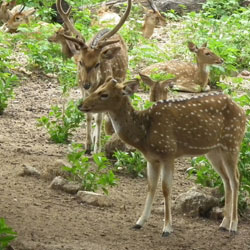
About Deer Park The Deer Park in Hyderabad is a popular tourist destination located in the heart of the city. It is a sprawling green oasis that is home to a variety of flora and fauna, including graceful deer that roam freely within the park. The park offers a serene and peaceful environment, making it a perfect place to unwind and connect with nature. Location and Geographical Overview The Deer Park is located in the heart of Hyderabad, near HITEC City. It covers an area of around 80 acres and is surrounded by lush greenery, making it a beautiful and tranquil spot for visitors to enjoy. Open and Closing Time The Deer Park is open to visitors from 8:00 AM to 6:00 PM every day of the week. Entry Free There is no entry fee to visit the Deer Park, making it accessible to all visitors. Species-Flora/Fauna Availability The park is home to a variety of flora and fauna, including various species of deer, peacocks, and other birds. Visitors can also spot different types of trees, plants, and flowers within the park. Activities Performed Visitors to the Deer Park can enjoy activities such as walking, bird-watching, and photography. The park also offers a serene environment for meditation and relaxation. Jeep Safari Charges The Deer Park does not offer jeep safari rides at the moment. Age Criterion for Male, Female, Children and Their Entry Fee There is no specific age criterion for entry to the Deer Park, and visitors of all ages are welcome. The entry fee is also free for all visitors. Senior Citizen Facilities The Deer Park provides facilities for senior citizens, including benches and shaded areas where they can rest and relax while enjoying the natural surroundings. Best Time to Visit The best time to visit the Deer Park is during the early morning or late afternoon when the weather is cooler and the wildlife is more active. Nearby Places to Visit Some nearby places to visit include Shilparamam Cultural Society, Durgam Cheruvu, and Botanical Gardens, which are all within a short driving distance from the Deer Park. Vehicle Parking Facility The Deer Park offers ample parking space for visitors who wish to drive to the park. The parking facility is safe and secure, allowing visitors to enjoy their visit without any concerns. Rules and Regulations Visitors to the Deer Park are required to follow certain rules and regulations to ensure the safety of the wildlife and other visitors. Some of the rules include not feeding the animals, maintaining cleanliness, and not causing any disturbance to the natural environment. How to Reach and Other Related Information The Deer Park is easily accessible by road, and visitors can reach the park by car, taxi, or public transportation. It is located near HITEC City, making it a convenient destination for both locals and tourists. The park is well-maintained and offers a peaceful retreat for those looking to escape the hustle and bustle of the city.
Explore More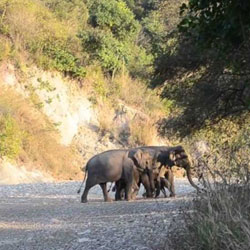
About Rajaji National Park Rajaji National Park, located near Dehradun in the state of Uttarakhand, is a magnificent wildlife sanctuary that spans across three districts - Haridwar, Dehradun, and Pauri Garhwal. It was established in 1983 and covers an area of 820 square kilometers, making it one of the largest national parks in India. The park is named after C. Rajagopalachari, a prominent leader of the Indian independence movement. Location and Geographical Overview Rajaji National Park is situated at the foothills of the Shivalik range in the Himalayas. The park is known for its diverse terrain, which includes dense forests, grasslands, and riverine vegetation. The park is home to a variety of wildlife species, including elephants, tigers, leopards, deer, and over 400 species of birds. Open and Closing Time The park is open to visitors from 6:00 AM to 9:00 PM every day of the week. Entry Fee The entry fee for Indian nationals is Rs. 150 per person, while foreign nationals are charged Rs. 600 per person. Children below the age of 5 years can enter for free. Species-Flora/Fauna Availability Rajaji National Park is home to a diverse range of flora and fauna. The park is known for its rich biodiversity, with over 300 species of birds, 50 species of mammals, and numerous reptiles and amphibians. Some of the wildlife species that can be spotted in the park include elephants, tigers, leopards, deer, monkeys, and bears. Activities Performed Visitors to Rajaji National Park can indulge in a variety of activities, including jeep safaris, elephant safaris, bird watching, nature walks, and wildlife photography. The park also offers opportunities for camping and trekking. Jeep Safari Charges The cost of a jeep safari in Rajaji National Park is Rs. 1500 per jeep for Indian nationals and Rs. 4000 per jeep for foreign nationals. The safari lasts for approximately 3-4 hours and covers various parts of the park where you can spot wildlife in their natural habitats. Age Criterion and Entry Fee for Male, Female, and Children The entry fee for Indian nationals is Rs. 150 per person for adults and children above the age of 5 years. Children below the age of 5 can enter for free. There is no separate entry fee based on gender. Senior Citizen Facilities Senior citizens above the age of 60 years can avail a discount on the entry fee by showing valid identification. They can also opt for a comfortable safari vehicle with seating arrangements that are suitable for their needs. Best Time to Visit The best time to visit Rajaji National Park is from November to March when the weather is pleasant and wildlife sightings are more common. Avoid visiting during the monsoon season (July-September) as the park may be closed due to heavy rainfall and slippery roads. Nearby Places to Visit There are several tourist attractions near Rajaji National Park that you can visit, including Robber's Cave, Buddha Temple, Sahastradhara, and the famous hill station of Mussoorie. Vehicle Parking Facility Rajaji National Park provides ample parking space for private vehicles near the entry gates. Visitors can safely park their cars and continue their exploration of the park in safari vehicles provided by the park authorities. Rules and Regulations Visitors to Rajaji National Park are required to follow certain rules and regulations to ensure the safety of wildlife and maintain the sanctity of the park. Some of the rules include maintaining silence during safaris, not feeding the animals, and not littering the park premises. How to Reach and Other Related Information Rajaji National Park is well-connected by road and can be easily reached from major cities like Dehradun and Haridwar. The nearest airport is the Jolly Grant Airport in Dehradun, which is approximately 20 kilometers away from the park. The nearest railway station is in Haridwar, which is around 30 kilometers from the park. Visitors can also opt for guided tours and packages offered by various tour operators in the region for a hassle-free visit to the park. It is advisable to book safari tickets in advance to avoid any last-minute rush. Plan your visit to Rajaji National Park to experience the beauty of nature and witness the majestic wildlife that thrives in this lush sanctuary.
Explore More
About Rampara Wildlife Sanctuary Rampara Wildlife Sanctuary is a popular wildlife sanctuary located in the Rajkot district of Gujarat, India. It was established in 1988 with the aim of preserving the rich biodiversity of the region. The sanctuary covers an area of approximately 15 square kilometers and is home to a variety of flora and fauna species. Location and Geographical Overview Rampara Wildlife Sanctuary is situated near the Rampara village in Rajkot district, approximately 47 kilometers away from the city of Rajkot. The sanctuary is nestled amidst the lush greenery of the Aravalli Range, providing a picturesque setting for visitors to explore. Open and Closing Time The sanctuary is open for visitors from 6:00 AM to 6:00 PM, allowing ample time to experience the beauty of the wildlife and natural surroundings. It is recommended to plan your visit during these hours to make the most of your trip. Entry Fee There is a nominal entry fee for visitors entering Rampara Wildlife Sanctuary. The entry fee for adults is Rs. 50, while children below the age of 5 can enter for free. The sanctuary also offers group discounts for larger parties. Species-Flora/Fauna Availability Rampara Wildlife Sanctuary is home to a diverse range of flora and fauna species. Visitors can spot animals like leopards, hyenas, blue bulls, and various bird species. The sanctuary also boasts a variety of plant species, adding to the rich biodiversity of the region. Activities Performed Visitors can engage in a range of activities at Rampara Wildlife Sanctuary, including nature walks, bird watching, and wildlife safaris. The sanctuary also offers guided tours for visitors who want to learn more about the local flora and fauna. Jeep Safari Charges For those looking to explore the sanctuary in style, jeep safaris are available at an additional cost. The charges for a jeep safari at Rampara Wildlife Sanctuary typically range from Rs. 500 to Rs. 1000, depending on the duration of the safari and the number of participants. Age Criterion and Entry Fee There is no specific age criterion for entering Rampara Wildlife Sanctuary. However, entry fees may vary based on the age of the visitor. As mentioned earlier, children below the age of 5 can enter for free, while adults are required to pay Rs. 50 for entry. Senior Citizen Facilities Rampara Wildlife Sanctuary provides special facilities for senior citizens to ensure a comfortable and enjoyable visit. Facilities like wheelchair access and designated rest areas are available to accommodate the needs of elderly visitors. Best Time to Visit The best time to visit Rampara Wildlife Sanctuary is during the winter months, from October to February. The weather during this time is pleasant, making it ideal for exploring the sanctuary and spotting wildlife in their natural habitat. Nearby Places to Visit While visiting Rampara Wildlife Sanctuary, visitors can explore other nearby attractions in the Rajkot district. Some popular places to visit include the Watson Museum, Aji Dam, and the Nyari Dam. These attractions offer a mix of cultural, historical, and natural experiences. Vehicle Parking Facility Rampara Wildlife Sanctuary offers ample parking facilities for visitors who choose to travel by car or other vehicles. The parking area is secure and well-maintained, ensuring the safety of visitors' vehicles during their visit to the sanctuary. Rules and Regulations Visitors are required to follow certain rules and regulations while visiting Rampara Wildlife Sanctuary to ensure the safety of the wildlife and the preservation of the natural environment. Some common rules include maintaining a safe distance from wild animals, refraining from littering, and following the instructions of the sanctuary guides. How to Reach and Other Related Information Rampara Wildlife Sanctuary can be easily reached by road from Rajkot city. Visitors can hire a taxi or take a bus to reach the sanctuary. The nearest airport is Rajkot Airport, which is approximately 57 kilometers away from the sanctuary. Accommodation options are available in and around Rajkot for visitors looking to stay overnight and explore the sanctuary at their leisure. Overall, Rampara Wildlife Sanctuary offers a delightful escape into nature for wildlife enthusiasts and nature lovers. With its rich biodiversity, picturesque surroundings, and range of activities, the sanctuary promises a memorable experience for visitors of all ages.
Explore More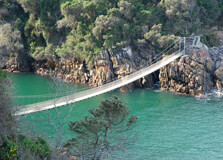
The Garden Route National Park is a picturesque paradise located on the southern coast of South Africa. It is a combination of three distinct sections – the Tsitsikamma, Wilderness, and Knysna national parks. The park covers a vast area of lush forests, pristine beaches, and dramatic coastlines, making it a popular destination for nature lovers and outdoor enthusiasts. Location and Geographical Overview The Garden Route National Park stretches along the Garden Route, a scenic stretch of coastline that runs from Mossel Bay in the west to Storms River in the east. The park is situated in the Western Cape province of South Africa, approximately a 5-hour drive from Cape Town. Opening and Closing Time The Garden Route National Park is open to visitors all year round. The gates typically open at 7 am and close at 6 pm. Entry Fee Entry fees to the Garden Route National Park vary depending on the section you are visiting and the activities you plan to do. The fees range from R40 to R200 for adults, with discounted rates for children and senior citizens. Species-Flora/Fauna Availability The Garden Route National Park is home to a diverse range of plant and animal species. The park is famous for its ancient forests, including giant yellowwoods and Outeniqua yellowwoods. Wildlife enthusiasts can also spot a variety of animals, such as elephants, buffaloes, leopards, and various bird species. Activities Performed Visitors to the Garden Route National Park can enjoy a wide range of activities, including hiking, birdwatching, picnicking, swimming, and camping. The park also offers guided walks, boat cruises, and jeep safaris for a more immersive experience. Jeep Safari Charges Jeep safari charges in the Garden Route National Park vary depending on the duration and route of the safari. Prices typically range from R500 to R1500 per person. Age Criterion and Entry Fee Entry fees for the Garden Route National Park are based on age categories. Children under the age of 12 usually enjoy discounted rates, while senior citizens may also be eligible for reduced fees. Adult entry fees apply to individuals over the age of 18. Senior Citizen Facilities The Garden Route National Park offers facilities and services tailored to the needs of senior citizens, including wheelchair-accessible paths, rest areas, and discounted rates for entry fees and activities. Best Time to Visit The best time to visit the Garden Route National Park is during the spring and autumn months (September to November and March to May), when the weather is mild, and the landscapes are lush and vibrant. However, the park is open year-round and offers unique experiences in every season. Nearby Places to Visit While exploring the Garden Route National Park, visitors can also visit nearby attractions such as the Tsitsikamma National Park, Wilderness National Park, and Knysna Lagoon. The charming towns of Knysna, Plettenberg Bay, and George are also worth a visit. Vehicle Parking Facility The Garden Route National Park provides parking facilities at designated areas near the entrance gates and popular attractions. Visitors are advised to follow the park's regulations and guidelines when parking their vehicles. Rules and Regulations Visitors to the Garden Route National Park are required to abide by certain rules and regulations to ensure the safety of themselves, other visitors, and the park's ecosystem. Some common regulations include staying on designated trails, refraining from littering, and respecting wildlife habitats. How to Reach and Other Related Information The Garden Route National Park is easily accessible by car from major cities in South Africa. Visitors can also reach the park by bus or organized tours. For more information on directions, accommodations, and activities, visitors can contact the park's visitor center or visit the official website.
Explore More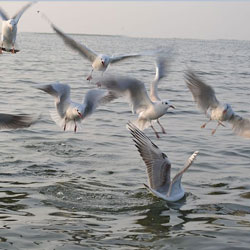
About Nal Sarovar Bird Sanctuary The Nal Sarovar Bird Sanctuary is located in Ahmedabad, Gujarat, and is a popular destination for bird watchers and nature enthusiasts. Spanning an area of 120.82 square kilometers, the sanctuary is home to a wide variety of bird species, making it a haven for bird lovers. Apart from birds, the sanctuary also houses several species of flora and fauna, adding to the rich biodiversity of the region. Location and Geographical Overview The Nal Sarovar Bird Sanctuary is situated around 64 kilometers away from the city of Ahmedabad. It is located near the village of Nalsarovar, which gives the sanctuary its name. The sanctuary is built around the Nal Lake, which is a shallow freshwater lake that attracts a large number of migratory birds during the winter months. Open and Closing Time The sanctuary is open for visitors from 6:00 AM to 6:00 PM every day of the week. Visitors are advised to plan their visit accordingly to make the most of their time at the sanctuary. Entry Fee The entry fee for the Nal Sarovar Bird Sanctuary is INR 75 for Indian nationals and INR 600 for foreign nationals. There is also a separate fee for vehicles entering the sanctuary. Species-Flora/Fauna Availability The sanctuary is home to a wide variety of bird species, including flamingos, pelicans, herons, egrets, and many more. Apart from birds, visitors can also spot several species of mammals, reptiles, and plants within the sanctuary, making it a treasure trove of biodiversity. Activities Performed Visitors to the Nal Sarovar Bird Sanctuary can indulge in activities such as bird watching, boating, nature walks, and picnicking. The serene surroundings and the diverse wildlife make it an ideal place for spending a day in the lap of nature. Jeep Safari Charges For those looking for a more adventurous experience, jeep safaris are also available at the sanctuary. The charges for a jeep safari vary depending on the duration and route chosen, starting from INR 500 per person. Age Criterion and Entry Fee Children below the age of 5 years can enter the sanctuary for free. The entry fee for male visitors above 12 years of age is INR 75, while female visitors above 18 years of age also have to pay the same amount. Senior citizens can avail of a discounted entry fee of INR 40. Senior Citizen Facilities Senior citizens visiting the sanctuary can avail of special facilities such as wheelchair access, resting areas, and guided tours to ensure a comfortable and enjoyable experience. Best Time to Visit The best time to visit the Nal Sarovar Bird Sanctuary is during the winter months, from November to February, when the migratory birds flock to the lake in large numbers. The weather is pleasant during this time, making it ideal for bird watching and other activities. Nearby Places to Visit There are several other attractions near the sanctuary that visitors can explore, such as the Lothal Archaeological Site, the Nalsarovar Lake, and the Thol Bird Sanctuary. These places offer a glimpse into the rich history and natural beauty of the region. Vehicle Parking Facility Visitors driving to the sanctuary can avail of the vehicle parking facility available near the entrance. The parking charges are minimal, making it convenient for visitors to park their vehicles and explore the sanctuary on foot. Rules and Regulations Visitors are required to follow certain rules and regulations while at the sanctuary, such as maintaining silence, not littering, and respecting the natural habitat of the wildlife. Smoking and alcohol consumption are strictly prohibited within the sanctuary premises to ensure the safety of the animals and the environment. How to Reach and Other Related Information The Nal Sarovar Bird Sanctuary is well connected by road, and visitors can easily reach the sanctuary by car or public transport. The nearest airport is Sardar Vallabhbhai Patel International Airport in Ahmedabad, which is around 70 kilometers away from the sanctuary. Accommodation options are available near the sanctuary for those looking to spend a night in the midst of nature. Overall, the Nal Sarovar Bird Sanctuary is a must-visit destination for nature lovers and bird enthusiasts. With its diverse wildlife, serene surroundings, and range of activities, the sanctuary offers a unique experience that is sure to leave visitors spellbound.
Explore More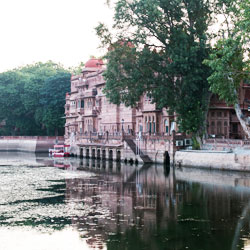
About Gajner Wildlife Sanctuary Gajner Wildlife Sanctuary is a popular sanctuary located in Bikaner, Rajasthan, India. It is spread over an area of 6019.60 hectares and is situated near the Gajner Palace. The sanctuary is known for its diverse flora and fauna, making it a must-visit destination for nature lovers and wildlife enthusiasts. Location and Geographical Overview The Gajner Wildlife Sanctuary is located around 32 kilometres from Bikaner city. It is situated on the banks of the Gajner Lake, which adds to the scenic beauty of the sanctuary. The sanctuary is surrounded by sand dunes, woodland areas, and a variety of vegetation that sustains the diverse wildlife population. Opening and Closing Time The Gajner Wildlife Sanctuary is open for visitors from sunrise to sunset. It is recommended to visit during the early hours of the day to witness the wildlife in their natural habitat. Entry Fee The entry fee for the Gajner Wildlife Sanctuary is INR 100 for Indian nationals and INR 300 for foreign nationals. Children below the age of 5 years can enter for free. Species-Flora/Fauna Availability The sanctuary is home to a diverse range of flora and fauna. Some of the commonly spotted animals include black bucks, desert foxes, blue bulls, chinkaras, and various bird species. The vegetation includes trees like acacia, neem, and khejri, along with shrubs and grasses. Activities Performed Visitors can indulge in various activities at the sanctuary, such as bird-watching, wildlife photography, nature walks, and jeep safaris. The sanctuary offers a unique opportunity to experience the wilderness up close. Jeep Safari Charges Jeep safaris are a popular way to explore the sanctuary and observe the wildlife in their natural habitat. The charges for a jeep safari at Gajner Wildlife Sanctuary start from INR 800 per person. Age Criterion and Entry Fee The entry fee for male and female visitors above the age of 5 years is INR 100 for Indian nationals and INR 300 for foreign nationals. Children below the age of 5 can enter for free. Senior citizens can avail of a discounted entry fee upon presenting valid identification. Senior Citizen Facilities Senior citizens visiting the sanctuary are provided with facilities like seating areas, restrooms, and water stations for their convenience. The sanctuary staff is also available to assist them during their visit. Best Time to Visit The best time to visit the Gajner Wildlife Sanctuary is during the winter months from October to March when the weather is pleasant, and wildlife sightings are more frequent. It is advisable to avoid visiting during the summer months due to the extreme heat. Nearby Places to Visit While in Bikaner, visitors can explore other nearby attractions such as Junagarh Fort, Karni Mata Temple, and Lalgarh Palace. These sites offer a glimpse into the rich history and culture of the region. Vehicle Parking Facility The sanctuary provides ample parking space for visitors who wish to bring their vehicles. The parking facility is safe and secure, allowing visitors to explore the sanctuary without any worries. Rules and Regulations Visitors are required to follow certain rules and regulations while visiting the Gajner Wildlife Sanctuary. These include maintaining cleanliness, not feeding or disturbing the wildlife, and adhering to the designated walking paths and safari routes. Smoking and littering are strictly prohibited in the sanctuary premises. How to Reach and Other Related Information The Gajner Wildlife Sanctuary is easily accessible by road from Bikaner city. Visitors can hire a taxi or use public transport to reach the sanctuary. The nearest airport is in Jodhpur, around 250 kilometres away, and the nearest railway station is in Bikaner. Accommodation options are available near the sanctuary for those looking to stay overnight. Overall, the Gajner Wildlife Sanctuary offers a unique opportunity to connect with nature and experience the beauty of Rajasthan's wildlife. With its diverse flora and fauna, scenic landscapes, and peaceful ambiance, it is a perfect destination for a memorable wildlife adventure.
Explore More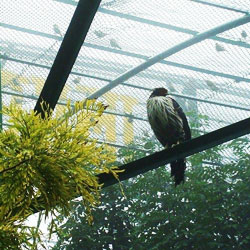
Explore the beauties of Himalayan Aviary! Himalayan Aviary also known as Himalayan Bird Park is located in Shimla (the queen of Himalayas), Himachal Pradesh. The park is situated at a height of around 2213meters. The Park is full of natural vegetation cover, which comprises of various rare species of plants & trees. One can see here a wide array of birds like Himalayan Monal, Peafowls, Pheasants, peacock etc. The summers are the ideal time to visit the park as the temperatures here never exceed above 250C. Winters are cold and the place fully gets covered with snow. Best season to visit- April-July. Location- Shimla, Himachal Pradesh. Accommodation Rail- The closest railway station is at Shimla itself. Air- The closest airport is located around 23kms from the place. Road- The Park is well connected by road to major cities of India.
Explore More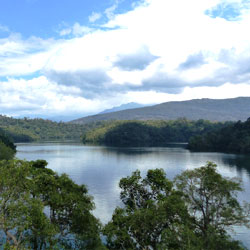
About Neyyar Wildlife Sanctuary Neyyar Wildlife Sanctuary is a beautiful protected area located in the southern state of Kerala, India. Spread across the southeast corner of the Western Ghats, this sanctuary is home to a diverse range of flora and fauna, making it a popular destination for nature lovers and wildlife enthusiasts. Location and Geographical Overview The Neyyar Wildlife Sanctuary is situated near the town of Thiruvananthapuram, the capital city of Kerala. It covers an area of approximately 128 square kilometers and is nestled amidst the lush greenery of the Western Ghats. The Neyyar River flows through the sanctuary, adding to its scenic beauty. Open and Closing Time The Neyyar Wildlife Sanctuary is open to visitors from 9:00 AM to 4:00 PM on all days of the week, except on Mondays when it remains closed for maintenance. Entry Fee The entry fee for Neyyar Wildlife Sanctuary is Rs. 20 for Indian nationals and Rs. 40 for foreign tourists. Children below the age of 12 can enter for free. Species-Flora/Fauna Availability The sanctuary is home to a wide variety of flora and fauna. Visitors can spot animals like elephants, wild boars, leopards, and various species of deer. The sanctuary is also a haven for birdwatchers, with over 176 species of birds recorded here. The lush green forests are dominated by species like teak, rosewood, and bamboo. Activities Performed Visitors to Neyyar Wildlife Sanctuary can enjoy a range of activities including trekking, birdwatching, and nature walks. Boating is also a popular activity at the sanctuary, with opportunities to explore the Neyyar Dam and its surroundings. Jeep Safari Charges For those looking to explore the sanctuary in depth, jeep safaris are available at an additional cost. The charges for a jeep safari vary depending on the duration and route chosen, starting from Rs. 1000 per vehicle. Age Criterion for Male, Female, Children, and Entry Fee There is no specific age criterion for entry into Neyyar Wildlife Sanctuary. The entry fee is the same for both male and female visitors, with children below 12 years allowed in for free. Senior Citizen Facilities Neyyar Wildlife Sanctuary is equipped to accommodate senior citizens, with designated resting areas and wheelchair-friendly paths for easy access around the sanctuary. Best Time to Visit The best time to visit Neyyar Wildlife Sanctuary is during the winter months of November to February when the weather is pleasant and wildlife sightings are more common. The monsoon season from June to September is also a good time to visit for those who enjoy lush greenery and the rejuvenating power of rain. Nearby Places to Visit While at Neyyar Wildlife Sanctuary, visitors can explore other nearby attractions such as the Neyyar Dam, which offers boating facilities and a picturesque view of the reservoir. The Agasthyakoodam Peak, a popular trekking destination, is also located close to the sanctuary. Vehicle Parking Facility Ample parking facilities are available at Neyyar Wildlife Sanctuary for visitors arriving by their own vehicles. The parking area is safe and well-maintained for the convenience of all guests. Rules and Regulations Visitors are required to abide by certain rules and regulations when inside Neyyar Wildlife Sanctuary. These include maintaining silence to avoid disturbing the wildlife, refraining from littering, and following the instructions of the park authorities at all times. How to Reach and Other Related Information Neyyar Wildlife Sanctuary is easily accessible from Thiruvananthapuram city, located approximately 32 kilometers away. Visitors can reach the sanctuary by taking a taxi, bus, or driving their own vehicle. The nearest airport is the Trivandrum International Airport, which is well-connected to major cities in India. Overall, Neyyar Wildlife Sanctuary is a serene and picturesque destination that offers a glimpse into the rich biodiversity of Kerala. Whether you're a nature lover, wildlife enthusiast, or simply looking for a peaceful retreat, a visit to this sanctuary is sure to leave you rejuvenated and inspired.
Explore More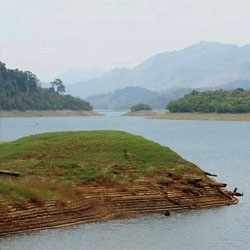
About Shenduruny Wildlife Sanctuary The Shenduruny Wildlife Sanctuary is a protected area located in the district of Kollam in the state of Kerala, India. It covers an area of approximately 100 square kilometers and is known for its rich biodiversity and scenic beauty. The sanctuary was established in 1984 with the aim of conserving the flora and fauna of the Western Ghats. Location and Geographical Overview The Shenduruny Wildlife Sanctuary is situated in the eastern part of the Western Ghats and is part of the Agasthyamalai Biosphere Reserve. It is surrounded by lush green forests, rolling hills, and meandering rivers, making it a perfect habitat for a variety of wildlife species. Opening and Closing Time The sanctuary is open to visitors from 8:00 AM to 5:00 PM on all days of the week, except for Mondays when it remains closed for maintenance. Entry Fee There is a nominal entry fee for visitors to enter the Shenduruny Wildlife Sanctuary. The fee varies for Indian nationals and foreign tourists, with discounted rates for students and senior citizens. Species-Flora/Fauna Availability The sanctuary is home to a diverse range of flora and fauna, including rare and endangered species. Some of the wildlife that can be spotted here include elephants, tigers, leopards, sloth bears, sambar deer, and various species of birds and butterflies. The lush greenery of the sanctuary is dominated by species like teak, rosewood, mahogany, and bamboo. Activities Performed Visitors to the Shenduruny Wildlife Sanctuary can indulge in a variety of activities such as nature walks, bird watching, trekking, and camping. The sanctuary also offers guided tours and jeep safaris for those interested in exploring the wildlife and natural beauty of the area. Jeep Safari Charges For those looking to experience the wildlife up close, the sanctuary offers jeep safaris at an additional cost. The charges for the jeep safari vary depending on the duration of the safari and the number of people in the group. Age Criterion and Entry Fee The entry fee for the Shenduruny Wildlife Sanctuary is based on the age of the visitor. There are separate rates for males, females, and children. Additionally, senior citizens are often offered discounted rates or free entry to the sanctuary. Senior Citizen Facilities The Shenduruny Wildlife Sanctuary is equipped with facilities to cater to the needs of senior citizens. There are provisions for resting areas, wheelchair access, and assistance from staff members if required. Best Time to Visit The best time to visit the Shenduruny Wildlife Sanctuary is during the winter months of November to February when the weather is pleasant and the wildlife is more active. However, the sanctuary is open throughout the year, and each season offers a unique experience to visitors. Nearby Places to Visit There are several tourist attractions near the Shenduruny Wildlife Sanctuary that visitors can explore, such as the Thenmala Ecotourism Project, Palaruvi Waterfalls, and the Tenkasi Courtallam Falls. These places offer a glimpse of the natural beauty and cultural heritage of the region. Vehicle Parking Facility For the convenience of visitors, the Shenduruny Wildlife Sanctuary provides ample parking space for cars and two-wheelers. The parking facility is well-maintained and secure, allowing visitors to explore the sanctuary without any worries about their vehicles. Rules and Regulations Visitors to the Shenduruny Wildlife Sanctuary are required to follow certain rules and regulations to ensure the safety of the wildlife and the environment. Some common rules include not littering, not feeding the animals, maintaining silence in the sanctuary, and not straying from designated paths. How to Reach and Other Related Information The Shenduruny Wildlife Sanctuary is easily accessible by road and is well-connected to major cities in Kerala. The nearest railway station is located in Kollam, which is approximately 66 kilometers away from the sanctuary. Visitors can also reach the sanctuary via private or public transportation options available in the region. In conclusion, the Shenduruny Wildlife Sanctuary is a haven for nature lovers and wildlife enthusiasts. With its stunning landscapes, diverse wildlife, and range of activities, it offers a memorable experience for visitors of all ages. Whether you are looking for a peaceful retreat in nature or an adventurous safari, the sanctuary has something to offer to everyone.
Explore More
About Dachigam National Park Dachigam National Park is a stunning wildlife sanctuary located in the state of Jammu and Kashmir in India. The name "Dachigam" translates to "ten villages," referencing the ten villages that were relocated to create the park in 1910. The park covers an area of approximately 141 square kilometers and is nestled in the beautiful Dachigam Valley, surrounded by the mighty Himalayas. Location and Geographical Overview Dachigam National Park is situated at a distance of about 22 kilometers from Srinagar, the summer capital of Jammu and Kashmir. The park is spread across the elevated slopes of the Zabarwan Mountain Range and is home to a diverse range of flora and fauna. Opening and Closing Time The park is open to visitors from 6:00 am to 5:00 pm on all days of the week, except for Fridays. Entry Fee The entry fee for Indian visitors is Rs. 50 per person, while foreign tourists are charged Rs. 300 per person. Children below the age of 5 years can enter the park for free. Species-Flora/Fauna Availability Dachigam National Park is renowned for its rich biodiversity. The park is home to a variety of flora, including coniferous forests, alpine pastures, and meadows. As for fauna, the park is known for its population of the endangered Hangul (Kashmir Stag), leopards, musk deer, Himalayan black bear, and various bird species. Activities Performed Visitors to Dachigam National Park can enjoy various activities such as wildlife viewing, bird watching, nature walks, and trekking. The park offers a tranquil environment for nature enthusiasts to explore and appreciate the beauty of the Himalayan ecosystem. Jeep Safari Charges Jeep safaris are available for visitors to explore the park and spot wildlife in their natural habitat. The charges for a jeep safari in Dachigam National Park may vary, and it is advisable to inquire at the park entrance or visitor center for current rates. Age Criterion and Entry Fee For male and female visitors, there is no specific age criterion for entry into the park. Children below the age of 5 years can enter for free, while those above 5 years are required to pay the applicable entry fee. Senior Citizen Facilities Dachigam National Park welcomes senior citizens to visit and explore the park. Special arrangements such as seating areas, resting points, and accessible pathways are provided to ensure a comfortable experience for senior visitors. Best Time to Visit The best time to visit Dachigam National Park is during the summer months from May to August, when the weather is pleasant, and wildlife sightings are more common. The park is typically closed during the winter months due to heavy snowfall. Nearby Places to Visit While visiting Dachigam National Park, visitors can also explore other popular destinations in the region such as Mughal Gardens, Dal Lake, Shankaracharya Temple, and Pari Mahal. These attractions offer a glimpse into the rich cultural and historical heritage of Kashmir. Vehicle Parking Facility Ample parking facilities are available near the entrance of Dachigam National Park for visitors who prefer to drive to the park. Visitors are advised to follow parking regulations and avoid blocking access points to ensure a smooth flow of traffic. Rules and Regulations Visitors to Dachigam National Park are required to adhere to certain rules and regulations to ensure the preservation of the park's ecosystem. Some common guidelines include not littering, refraining from feeding wildlife, and following designated pathways to avoid disturbing the natural habitat. How to Reach and Other Related Information Dachigam National Park is easily accessible from Srinagar by road, and taxis or private vehicles can be hired to reach the park entrance. The nearest airport is Srinagar International Airport, located approximately 28 kilometers away. For accommodations, visitors can choose from a range of hotels and guesthouses in Srinagar city. Overall, Dachigam National Park offers a unique opportunity to witness the natural beauty and wildlife of the Himalayan region. Whether you are a nature lover, wildlife enthusiast, or simply seeking a peaceful retreat, a visit to this spectacular park is sure to leave you spellbound.
Explore More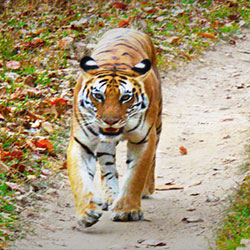
About Kanha National Park Kanha National Park is a renowned wildlife sanctuary located in the Mandla district of Madhya Pradesh, India. It is one of the largest national parks in India, covering an area of 940 square kilometers. Established in 1955, the park is famous for its diverse range of flora and fauna, including the majestic Royal Bengal Tiger. The lush green forests, meadows, and streams make it a haven for nature lovers and wildlife enthusiasts. Location and Geographical Overview Kanha National Park is situated in the Maikal Hills of the Satpura Range. It is located near the towns of Mandla and Balaghat in the state of Madhya Pradesh. The park is characterized by its dense forests, grasslands, and numerous watering holes, providing a conducive habitat for a wide variety of wildlife. Opening and Closing Time The park is open for visitors from October to June every year. The timings are from 6:30 am to 10:30 am for the morning safari and from 2:30 pm to 6:00 pm for the evening safari. Entry Fee The entry fee for Indian nationals is INR 1530 per person for a safari. Foreign nationals are charged INR 3060 per person. Additional charges apply for cameras and vehicles. Species-Flora/Fauna Availability Kanha National Park is home to a diverse range of flora and fauna. Some of the species found here include tigers, leopards, wild dogs, swamp deer, barasingha, jackals, hyenas, and more. The park is also known for its rich vegetation, including sal forests, bamboo groves, and grasslands. Activities Performed Visitors to Kanha National Park can enjoy a variety of activities such as jeep safaris, nature walks, birdwatching, and photography. The park also offers guided tours and wildlife presentations for a more immersive experience. Jeep Safari Charges The cost of a jeep safari in Kanha National Park varies depending on the zone and duration of the safari. On average, the prices range from INR 2000 to INR 5000 per person. Age Criterion for Male, Female, Children, and Entry Fee Children below the age of 5 years are not allowed entry into the park. The entry fee for children between 5-12 years is INR 1530. For adults (male and female), the entry fee is INR 3060. Senior Citizen Facilities Kanha National Park offers special facilities for senior citizens, including wheelchair access, designated rest areas, and priority seating on safari vehicles. Discounted rates may also be available for senior citizens. Best Time to Visit The best time to visit Kanha National Park is during the winter months from November to February. The weather is pleasant, and wildlife sightings are more frequent during this time. The park is closed during the monsoon season from July to September. Nearby Places to Visit Some of the nearby attractions to Kanha National Park include the Bamni Dadar viewpoint, Sonf Meadows, and Kawardha Palace. These places offer scenic beauty, cultural insights, and opportunities for relaxation and exploration. Vehicle Parking Facility Kanha National Park provides designated parking areas for private vehicles near the entrance gate. Visitors can safely park their cars and proceed to the safari vehicles provided by the park authorities. Rules and Regulations Visitors to Kanha National Park are required to follow certain rules and regulations to ensure the safety of wildlife and maintain the ecological balance. Some of the common rules include maintaining silence during safaris, refraining from feeding or disturbing animals, and adhering to designated safari routes. How to Reach and Other Related Information Kanha National Park is well-connected by road, rail, and air. The nearest airport is Jabalpur Airport, approximately 160 kilometers away. The nearest railway station is Bilaspur Junction, around 150 kilometers from the park. Visitors can also opt for private or public transport to reach the park from nearby towns and cities. It is advisable to make advance bookings for safari permits and accommodations to avoid any last-minute hassles. Additionally, carrying essential items such as water bottles, hats, sunscreen, and binoculars can enhance your wildlife viewing experience at Kanha National Park.
Explore More
Kalsubai Harishchandragad Wildlife Sanctuary
About Kalsubai Harishchandragad Wildlife Sanctuary The Kalsubai Harishchandragad Wildlife Sanctuary, located in Ahmednagar district of Maharashtra, is a haven for nature enthusiasts and wildlife lovers. Spread over an area of 548.524 square kilometers, this sanctuary is home to a diverse range of flora and fauna. The sanctuary was established in 1986 with the aim of protecting the biodiversity of the region. Location and Geographical Overview The sanctuary is situated in the Western Ghats, one of the biodiversity hotspots in the world. It is located at a distance of around 140 kilometers from Pune and 180 kilometers from Mumbai. The terrain of the sanctuary is rugged and hilly, with the famous Kalsubai Peak, the highest peak in Maharashtra, located within its boundaries. Open and Closing Time The sanctuary is open to visitors from 6:00 AM to 6:00 PM on all days of the week. It is recommended to visit during the early morning or late afternoon hours to witness the vibrant wildlife activity in the sanctuary. Entry Fee The entry fee for visiting the Kalsubai Harishchandragad Wildlife Sanctuary is INR 50 per person for Indian nationals and INR 200 per person for foreign nationals. Children below the age of 5 years can enter for free. Species-Flora/Fauna Availability The sanctuary is rich in biodiversity and is home to a variety of flora and fauna. Some of the wildlife species that can be spotted here include leopards, barking deer, wild boars, and various species of birds. The sanctuary is also known for its diverse plant species such as teak, bamboo, and medicinal herbs. Activities Performed Visitors to the sanctuary can indulge in activities such as nature walks, bird watching, and photography. The sanctuary also offers jeep safaris for those looking to explore the wildlife in a more immersive way. Jeep Safari Charges The charges for a jeep safari in the sanctuary are INR 1500 per person. The safari duration is around 2-3 hours and is conducted by experienced guides who provide valuable insights about the wildlife and vegetation in the sanctuary. Age Criterion and Entry Fee The entry fee for male and female visitors above the age of 12 years is INR 50. For children between the ages of 5-12 years, the entry fee is INR 20. Children below the age of 5 years can enter for free. Senior citizens above the age of 60 years are eligible for a discounted entry fee of INR 30. Senior Citizen Facilities The sanctuary provides special facilities for senior citizens, including seating areas, designated walking paths, and restrooms with disabled access. The staff at the sanctuary is also trained to assist senior citizens with any special requirements they may have. Best Time to Visit The best time to visit the Kalsubai Harishchandragad Wildlife Sanctuary is during the winter months from November to February. The weather is pleasant during this time, and wildlife sightings are more frequent. However, the sanctuary is open throughout the year, and each season offers a unique experience to visitors. Nearby Places to Visit There are several tourist attractions near the sanctuary that visitors can explore, such as the Kalsubai Temple, Harishchandragad Fort, and the picturesque Bhandardara Lake. These places offer a glimpse into the rich history and culture of the region. Vehicle Parking Facility The sanctuary provides ample parking space for both two-wheelers and four-wheelers. Visitors can park their vehicles in designated areas near the entrance of the sanctuary. Parking charges may apply, so it is advisable to inquire about the same at the entrance gate. Rules and Regulations - Visitors are required to maintain the sanctity of the sanctuary by not littering or disturbing the wildlife. - Smoking and consumption of alcohol are strictly prohibited within the premises. - Pets are not allowed inside the sanctuary for the safety of both the animals and visitors. - It is advisable to follow the instructions of the sanctuary staff and guides to ensure a safe and enjoyable visit. How to Reach and Other Related Information The Kalsubai Harishchandragad Wildlife Sanctuary is easily accessible by road from major cities like Pune and Mumbai. Visitors can hire a private vehicle or opt for state-run buses to reach the sanctuary. The nearest railway station is Igatpuri, which is around 30 kilometers away. The sanctuary is well-connected by a network of roads, making it convenient for visitors to travel to and from the sanctuary.
Explore More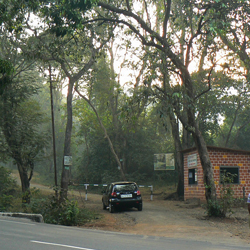
The sanctuary lies among the ranges of Western Ghats in the district of Raigad. The sanctuary is also reckoned as a paradise for trekkers due to the presence of various hills in the area. The sanctuary is also famous for the Karnala fort, which is situated within the sanctuary.The fort has a very rich historical past and thus is turning out to be a favorite place of tourists. The sanctuary is an ideal place for bird watching as well as for trekking.Flora-The place is very rich in natural vegetation cover that includes various species of trees and plants. The most part of the sanctuary is covered with various deciduous trees like mango, kalam, koshimb, teak, asana, nana, umbar, kulu etc.Fauna-The sanctuary is a home to various animals like African monkeys, common langur, barking deer, wild boar, four horned antelope and in some cases leopards are also seen here.Avifauna-The sanctuary provides shelter to about 147species of domestic birds and around 37 species of various migratory birds. The sanctuary is a dwelling place of two rare birds i.e. spotted heart woodpecker and ashy minimet. The other types of birds that are seen here include peregrine falcon, crested serpent eagle, king vulture etc.Other Activities Barring bird-watching, the sanctuary also serves a good place for trekking. There are two trekking routes i.e. one is an easy route while the other one is a hard route. One should avoid trekking during the monsoons as it may be dangerous.
Explore More
Sanjay Gandhi Wildlife Sanctuary
About Sanjay Gandhi Wildlife Sanctuary The Sanjay Gandhi National Park, previously known as the Borivali National Park, is located in Mumbai, Maharashtra. It is one of the most visited national parks in Asia, attracting millions of visitors every year. The park is named after Sanjay Gandhi, the son of former Prime Minister of India, Indira Gandhi, and is spread across an area of 104 square kilometers. Location and Geographical Overview The Sanjay Gandhi National Park is situated in the northern part of Mumbai city and is bordered by the suburbs of Borivali, Goregaon, and Mulund. The park is nestled amidst the lush green hills of the Western Ghats and is home to a variety of flora and fauna. The park also encompasses the Kanheri Caves, which are ancient Buddhist rock-cut caves dating back to the 1st century BC. Opening and Closing Time The Sanjay Gandhi National Park is open to visitors from 7:30 am to 6:30 pm every day, including weekends and public holidays. Entry Fee The entry fee for the Sanjay Gandhi National Park is as follows: Indian Visitors: ₹ 65 per person Foreign Visitors: ₹ 200 per person Species-Flora/Fauna Availability The Sanjay Gandhi National Park is home to a diverse range of flora and fauna. The park is home to over 1,300 species of plants, 274 species of birds, 50 species of butterflies, and a variety of mammals including leopards, deer, monkeys, and wild boars. The park is also home to the Indian giant squirrel, which is one of the largest squirrels in the world. Activities Performed Visitors to the Sanjay Gandhi National Park can indulge in a variety of activities including nature walks, bird watching, boating at the Tulsi Lake, and visiting the Kanheri Caves. The park also offers guided safaris and treks for those looking to explore the wildlife and natural beauty of the park. Jeep Safari Charges The park offers jeep safaris for visitors to explore the wildlife and dense forest areas. The charges for a jeep safari are ₹ 1,000 per person, with a minimum of four persons required for a safari. Age Criterion and Entry Fee The entry fee for the Sanjay Gandhi National Park varies based on the age and gender of the visitors: Men: ₹ 65 Women: ₹ 40 Children (ages 5-12): ₹ 30 Senior Citizen Facilities Senior citizens above the age of 60 can avail a 50% discount on the entry fee to the park. They can also request for wheelchair assistance and preferential seating on the safari vehicles. Best Time to Visit The best time to visit the Sanjay Gandhi National Park is during the winter months of November to February when the weather is pleasant and the wildlife is more active. The park is also beautiful during the monsoon season from June to September when the flora is lush and green. Nearby Places to Visit There are several attractions near the Sanjay Gandhi National Park that visitors can explore, including the Kanheri Caves, Film City, Essel World amusement park, and the Global Vipassana Pagoda. These attractions offer a mix of cultural, historical, and recreational experiences. Vehicle Parking Facility The Sanjay Gandhi National Park has ample parking facilities for visitors bringing their own vehicles. The parking charges are ₹ 30 for cars and ₹ 10 for two-wheelers. Rules and Regulations Visitors to the park are required to follow certain rules and regulations to ensure the safety of the wildlife and the environment. Some of the key rules include not littering, not feeding the animals, not making loud noises, and staying on designated trails during treks and safaris. How to Reach and Other Related Information The Sanjay Gandhi National Park is easily accessible by both public and private transport. The nearest railway station is Borivali, which is well-connected to Mumbai city and suburbs. Visitors can also reach the park by bus or taxi from various parts of the city. For those driving to the park, the address is Western Express Highway, Borivali East, Mumbai, Maharashtra. To explore the park, visitors can rent bicycles or avail of the safari and trekking options provided by the park authorities. Overall, the Sanjay Gandhi National Park is a haven for nature lovers and wildlife enthusiasts, offering a unique blend of biodiversity, history, and adventure in the heart of Mumbai city. Whether you're looking to spot a leopard, explore ancient caves, or simply enjoy a peaceful stroll amidst nature, the park has something for everyone.
Explore More
About Peppara Wildlife Sanctuary Peppara Wildlife Sanctuary is a haven for nature lovers and wildlife enthusiasts located in Thiruvananthapuram district in the southern state of Kerala, India. Spread over an area of 75 square kilometers, this sanctuary is home to a diverse range of flora and fauna, making it a popular destination for eco-tourism. Location and Geographical Overview The sanctuary is situated about 50 kilometers northeast of Thiruvananthapuram city and is nestled amidst the Western Ghats. It is surrounded by lush green forests, rolling hills, and the serene Peppara Dam Reservoir. The diverse terrain of the sanctuary includes tropical moist evergreen forests, grasslands, and freshwater streams, creating a perfect habitat for a wide variety of wildlife. Open and Closing Time The Peppara Wildlife Sanctuary is open to visitors from 8:00 AM to 4:00 PM on all days of the week, except on Mondays and national holidays. Entry Fee There is a nominal entry fee for visitors to the sanctuary, with separate rates for Indian and foreign nationals. The entry fee for Indian adults is INR 25, while children below 12 years of age can enter for INR 5. Foreign nationals are charged INR 50 for entry. Species-Flora/Fauna Availability The sanctuary is home to a rich diversity of plant and animal species. The lush green forests are filled with a variety of trees, including teak, rosewood, ebony, and bamboo. The sanctuary is also inhabited by a range of wildlife such as elephants, tigers, leopards, sloth bears, sambar deer, lion-tailed macaques, and a wide array of bird species. Activities Performed Visitors to Peppara Wildlife Sanctuary can engage in a range of activities such as nature walks, trekking, bird watching, and wildlife photography. The sanctuary also offers guided tours and educational programs for visitors to learn more about the flora and fauna of the region. Jeep Safari Charges For those looking to explore the sanctuary in a more adventurous way, jeep safaris are available at an additional cost. The charges for a jeep safari vary depending on the duration of the safari and the number of participants. It is recommended to book jeep safaris in advance to ensure availability. Age Criterion and Entry Fee Children below 5 years of age can enter the sanctuary free of charge. For male and female visitors above 12 years of age, the entry fee is INR 25 for Indians and INR 50 for foreign nationals. Senior citizens above 60 years of age are eligible for a discounted entry fee of INR 10. Senior Citizen Facilities Peppara Wildlife Sanctuary offers facilities such as seating areas, shaded rest spots, and easy walking trails for senior citizens to comfortably explore the sanctuary. The staff at the sanctuary are also trained to assist senior citizens and provide any necessary support. Best Time to Visit The best time to visit Peppara Wildlife Sanctuary is from the months of November to March, when the weather is pleasant and the wildlife sightings are at their peak. The monsoon season from June to September brings heavy rainfall, making it difficult for visitors to explore the sanctuary. Nearby Places to Visit Located in the vicinity of Peppara Wildlife Sanctuary are several other attractions that visitors can explore. Some of the nearby places of interest include Agasthyakoodam Peak, Bonacaud Tea Estate, Meenmutty Waterfalls, and Neyyar Dam. Vehicle Parking Facility Visitors to the sanctuary can avail of the designated parking facilities available near the entrance. There is ample space for cars, bikes, and buses, ensuring a hassle-free parking experience for all visitors. Rules and Regulations Visitors to Peppara Wildlife Sanctuary are required to adhere to certain rules and regulations to ensure the safety of the wildlife and the preservation of the natural habitat. Some of the guidelines include maintaining silence, avoiding littering, refraining from feeding the animals, and following the instructions of the sanctuary staff. How to Reach and Other Related Information Peppara Wildlife Sanctuary is easily accessible by road from Thiruvananthapuram city, with regular bus services and taxi options available. The nearest railway station is Thiruvananthapuram Central, which is well-connected to major cities in the region. The nearest airport is Trivandrum International Airport, located approximately 50 kilometers away from the sanctuary. Overall, a visit to Peppara Wildlife Sanctuary offers a unique opportunity to connect with nature and witness the beauty of Kerala's biodiversity up close. Whether you're a wildlife enthusiast, a nature lover, or simply looking for a peaceful retreat, this sanctuary has something to offer for everyone.
Explore More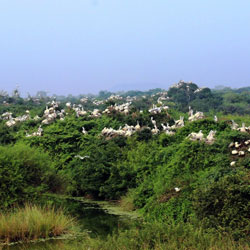
Nelapattu Bird Sanctuary is a well known bird sanctuary in India and is the favorite spot of migration for pelicans. Nelapattu village sarpanch B.Vijaya Bhaskar said that Fleming festival done every year first or second week of January Month. Before undertaking by Govt of Andhra Pradesh, the local villagers protected the birds sanctuary. It will be better Govt of Andhra pradesh to adopt the village to develop and protect birds sanctuary.Avifauna- The sanctuary holds a large species of birds that include spotted belied pelican, white ibis, spoon bill, open billed stork, night heron, little cormorant, painted stork, babblers, coot, waders, flamingos and many more. Fauna- Barring birds, the sanctuary is a home to various mammals like slender loris, jackals, spotted deer. Chief Attraction- Pelican birds that migrate here each and every year. In Southeast Asia, it is the main habitat of pelican.
Explore More
Parambikulam Wildlife Sanctuary
About Parambikulam Wildlife Sanctuary The Parambikulam Wildlife Sanctuary is a protected area in the Palakkad district of Kerala, India. It is one of the most well-preserved wildlife sanctuaries in the region and is known for its diverse flora and fauna. The sanctuary is spread across 285 square kilometers and is home to a wide variety of animals, including elephants, tigers, leopards, and deer. Location and Geographical Overview The Parambikulam Wildlife Sanctuary is located in the Western Ghats, near the border of Kerala and Tamil Nadu. The sanctuary is situated in a valley between the Anamalai Hills and the Nelliampathy Hills, making it a picturesque and serene destination for nature lovers. Open and Closing Time The Parambikulam Wildlife Sanctuary is open to visitors from 7:00 AM to 6:00 PM every day of the week. Entry Fee The entry fee for the Parambikulam Wildlife Sanctuary is Rs. 50 for adults and Rs. 25 for children. Species-Flora/Fauna Availability The sanctuary is home to a wide variety of plant and animal species. Some of the flora found in the sanctuary include teak, rosewood, sandalwood, and bamboo. The fauna includes elephants, tigers, leopards, sambar deer, and Indian bison. Activities Performed Visitors to the Parambikulam Wildlife Sanctuary can engage in activities such as trekking, bird watching, and nature walks. The sanctuary also offers guided tours and jeep safaris for a closer look at the wildlife. Jeep Safari Charges The charges for a jeep safari in the Parambikulam Wildlife Sanctuary are Rs. 300 per person. Age Criterion and Entry Fee For males above 12 years of age, the entry fee is Rs. 50. For females above 12 years, the entry fee is Rs. 25. Children below 12 years can enter for Rs. 25. There is no entry fee for children below 5 years. Senior Citizen Facilities Senior citizens above the age of 65 can avail a discount on the entry fee to the Parambikulam Wildlife Sanctuary. Best Time to Visit The best time to visit the Parambikulam Wildlife Sanctuary is between the months of November and April when the weather is pleasant and the chances of spotting wildlife are higher. Nearby Places to Visit Some of the nearby places to visit from the Parambikulam Wildlife Sanctuary include the Anamalai Tiger Reserve, Nelliyampathy Hills, and the Athirapally Waterfalls. Vehicle Parking Facility The sanctuary offers a vehicle parking facility for visitors at the entrance. Visitors can park their cars or bikes securely while they explore the sanctuary. Rules and Regulations Visitors to the Parambikulam Wildlife Sanctuary are required to follow certain rules and regulations to ensure the safety of the wildlife and maintain the sanctity of the sanctuary. Some of the rules include not feeding the animals, not littering, and not making loud noises that may disturb the animals. How to Reach and Other Related Information The Parambikulam Wildlife Sanctuary can be reached by road from nearby cities like Palakkad and Coimbatore. The nearest airport is Coimbatore International Airport, which is approximately 100 kilometers away. There are also bus services available from Palakkad to the sanctuary. Accommodation options are limited within the sanctuary, so it is advisable to book in advance if you plan to stay overnight.
Explore More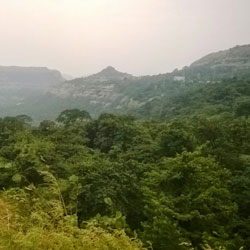
Bhimashankar Wildlife Sanctuary
About Bhimashankar Wildlife Sanctuary Bhimashankar Wildlife Sanctuary is a protected area located in the Western Ghats of Maharashtra, India. Established in 1984, the sanctuary covers an area of 131.78 square kilometers and is known for its rich biodiversity and unique ecosystem. The sanctuary is named after the Bhimashankar Temple, which is situated within its boundaries. Location and Geographical Overview The Bhimashankar Wildlife Sanctuary is located in the Pune district of Maharashtra, approximately 100 kilometers from the city of Pune. The sanctuary is situated at an altitude of 2100 feet to 3800 feet above sea level and is surrounded by lush green forests and scenic landscapes. The sanctuary is home to a variety of flora and fauna, making it a popular destination for nature lovers and wildlife enthusiasts. Open and Closing Time The Bhimashankar Wildlife Sanctuary is open to visitors from 7:00 AM to 6:00 PM on all days of the week. Entry Fee The entry fee for visiting the Bhimashankar Wildlife Sanctuary is INR 50 for Indian nationals and INR 500 for foreign tourists. Species-Flora/Fauna Availability The sanctuary is home to a diverse range of flora and fauna, including rare species of plants and animals. Some of the important wildlife species found in the sanctuary include Indian Giant Squirrel, Indian Pangolin, Indian Civet, and Indian Flying Fox. The sanctuary is also known for its rich birdlife, with over 250 species of birds recorded in the area. Activities Performed Visitors to the Bhimashankar Wildlife Sanctuary can engage in a variety of activities such as nature walks, bird watching, and trekking. The sanctuary also offers guided tours and jeep safaris for a closer look at the wildlife and natural beauty of the area. Jeep Safari Charges The charges for a jeep safari in the Bhimashankar Wildlife Sanctuary vary depending on the duration and route of the safari. On average, the cost of a jeep safari ranges from INR 1000 to INR 2000 per person. Age Criterion and Entry Fee For male visitors, the entry fee is INR 50, for female visitors it is INR 30, and for children below the age of 12, the entry fee is INR 20. Senior Citizen Facilities Senior citizens above the age of 60 are provided with a discount on the entry fee and special assistance is available for a comfortable visit to the sanctuary. Best Time to Visit The best time to visit the Bhimashankar Wildlife Sanctuary is during the winter months of November to February when the weather is pleasant and wildlife sightings are more frequent. The monsoon season from June to September is also a good time to visit for lush greenery and waterfall views. Nearby Places to Visit Some of the nearby attractions to visit while in the vicinity of the Bhimashankar Wildlife Sanctuary include the Bhimashankar Temple, Hanuman Lake, and Gupt Bhimashankar Cave. Vehicle Parking Facility Visitors to the sanctuary can avail of the vehicle parking facility available near the entrance gate. Parking charges apply based on the type of vehicle. Rules and Regulations Visitors are required to follow certain rules and regulations while inside the sanctuary, including not littering, not feeding the animals, and maintaining silence to avoid disturbing the wildlife. Smoking and alcohol consumption are strictly prohibited within the sanctuary premises. How to Reach and Other Related Information The Bhimashankar Wildlife Sanctuary can be reached by road from Pune, Mumbai, and other major cities in Maharashtra. The nearest airport is Pune Airport, approximately 120 kilometers away, and the nearest railway station is Pune Railway Station, around 100 kilometers from the sanctuary. Accommodation options are available in the nearby town of Bhimashankar for visitors looking to stay overnight. Overall, the Bhimashankar Wildlife Sanctuary offers a unique opportunity to experience the beauty of nature and wildlife in a peaceful and tranquil environment. Whether you are a nature lover, adventure enthusiast, or wildlife photographer, a visit to this sanctuary is sure to leave you with unforgettable memories.
Explore More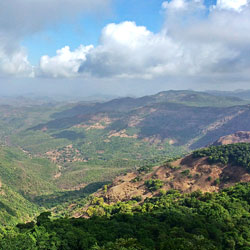
Radhanagari Wildlife Sanctuary
About Radhanagari Wildlife Sanctuary The Radhanagari Wildlife Sanctuary is located in the Kolhapur district of Maharashtra, India. It was established in 1958 and spans over an area of 351.16 square kilometers. The sanctuary is known for its rich biodiversity and is home to a variety of flora and fauna. Location and Geographical Overview The Radhanagari Wildlife Sanctuary is situated in the Western Ghats mountain range, near the Radhanagari Dam. It is surrounded by dense forests, rivers, and hills, making it a picturesque and serene destination for nature lovers and wildlife enthusiasts. Open and Closing Time The sanctuary is open to visitors from 7:00 AM to 6:00 PM every day. Entry Fee The entry fee for Indian nationals is INR 50 per person, while the fee for foreign nationals is INR 300 per person. Species-Flora/Fauna Availability The sanctuary is home to a wide variety of plant and animal species. Some of the notable flora found here include teak, bamboo, Indian rosewood, and blackwood trees. The fauna includes species such as Indian bison, Indian leopard, sambar deer, barking deer, and various species of birds and reptiles. Activities Performed Visitors can engage in activities such as nature walks, bird watching, trekking, and safari tours to explore the diverse wildlife and vegetation in the sanctuary. Jeep Safari Charges The charges for a jeep safari in the Radhanagari Wildlife Sanctuary are INR 1,000 per jeep for Indian nationals and INR 2,000 per jeep for foreign nationals. Age Criterion and Entry Fee - For males: Adults (Above 12 years): INR 50, Children (6-12 years): INR 25 - For females: Adults (Above 12 years): INR 50, Children (6-12 years): INR 25 - Senior Citizens (Above 60 years): INR 25 Senior Citizen Facilities Senior citizens above the age of 60 can avail discounted entry fees and are provided with special facilities such as seating areas and restrooms for their convenience. Best Time to Visit The best time to visit the Radhanagari Wildlife Sanctuary is from October to May when the weather is pleasant and the chances of spotting wildlife are higher. Nearby Places to Visit Some of the nearby places to visit include the Radhanagari Dam, Dajipur Wildlife Sanctuary, and Panhala Fort, which offer additional opportunities for sightseeing and exploring the natural beauty of the region. Vehicle Parking Facility The sanctuary provides ample parking space for visitors who arrive by their own vehicles. The parking facilities are well-maintained and secure for the convenience of tourists. Rules and Regulations Visitors are required to follow certain rules and regulations while visiting the sanctuary, such as maintaining cleanliness, avoiding littering, refraining from feeding the animals, and following the instructions of the park authorities. How to Reach and Other Related Information The Radhanagari Wildlife Sanctuary is located approximately 55 kilometers from Kolhapur city. Visitors can reach the sanctuary by hiring a private vehicle or taking a bus to the nearest town of Radhanagari and then hiring a local taxi or auto-rickshaw to reach the sanctuary entrance. The nearest airport is in Kolhapur, and the nearest railway station is in Kolhapur as well. For accommodation, visitors can stay in nearby guesthouses, resorts, or hotels in Kolhapur city, which offer a range of options to suit various budgets and preferences. Overall, the Radhanagari Wildlife Sanctuary is a must-visit destination for nature lovers and wildlife enthusiasts looking to experience the beauty and biodiversity of the Western Ghats region in Maharashtra.
Explore More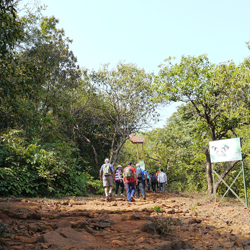
About Koyna Wildlife Sanctuary The Koyna Wildlife Sanctuary is located in the Satara district of Maharashtra, India. It was established in 1985 and covers an area of approximately 423 square kilometers. The sanctuary is known for its diverse flora and fauna, making it a popular destination for nature lovers and wildlife enthusiasts. Location and Geographical Overview The Koyna Wildlife Sanctuary is situated in the Western Ghats, a UNESCO World Heritage Site known for its rich biodiversity. The sanctuary is located near the Koyna River and is surrounded by lush green forests and towering mountains, providing a picturesque backdrop for visitors. Open and Closing Time The Koyna Wildlife Sanctuary is open to visitors from 7:00 AM to 6:00 PM every day of the week. Entry Fee The entry fee for the Koyna Wildlife Sanctuary is INR 50 for Indian adults and INR 25 for Indian children. Foreign tourists are charged INR 300 per person. Species-Flora/Fauna Availability The sanctuary is home to a wide variety of flora and fauna, including species like tigers, leopards, sloth bears, Indian bison, and a variety of bird species. The diverse ecosystem of the sanctuary supports a rich biodiversity that attracts wildlife enthusiasts from around the world. Activities Performed Visitors to the Koyna Wildlife Sanctuary can enjoy activities like nature walks, bird watching, and wildlife spotting. The sanctuary also organizes jeep safaris and guided tours for visitors to explore the natural beauty of the area. Jeep Safari Charges The charges for a jeep safari in the Koyna Wildlife Sanctuary vary based on the duration of the safari and the number of people participating. On average, the cost of a jeep safari ranges from INR 800 to INR 1500 per person. Age Criterion for Male, Female, Children and their Entry Fee There is no specific age criterion for entry into the Koyna Wildlife Sanctuary. However, the entry fee for Indian adults is INR 50, for Indian children it is INR 25, and for foreign tourists, it is INR 300 per person. Senior Citizen Facilities The Koyna Wildlife Sanctuary provides special facilities for senior citizens, including wheelchair access to certain areas of the sanctuary and discounted entry fees for elderly visitors. Best Time to Visit The best time to visit the Koyna Wildlife Sanctuary is during the winter months, from November to February, when the weather is cool and pleasant. This is also the ideal time for wildlife spotting and enjoying outdoor activities in the sanctuary. Nearby Places to Visit There are several tourist attractions near the Koyna Wildlife Sanctuary, including the Koyna Dam, Kaas Plateau, Thoseghar Waterfalls, and the hill station of Mahabaleshwar. These places offer additional opportunities for sightseeing and exploring the natural beauty of the region. Vehicle Parking Facility The Koyna Wildlife Sanctuary provides ample parking space for visitors who choose to drive to the sanctuary. There is designated parking available near the entrance for cars, buses, and other vehicles. Rules and Regulations Visitors to the Koyna Wildlife Sanctuary are required to follow certain rules and regulations to ensure the safety of the wildlife and preserve the natural environment. Some of the key regulations include not littering, not feeding the animals, and not making excessive noise that may disturb the wildlife. How to Reach and Other Related Information The Koyna Wildlife Sanctuary is easily accessible by road from major cities like Pune and Mumbai. The nearest airport is in Pune, approximately 190 kilometers away from the sanctuary. Visitors can also reach the sanctuary by train, with the nearest railway station being at Satara, around 60 kilometers from the sanctuary. Overall, the Koyna Wildlife Sanctuary offers a unique opportunity to experience the beauty of nature and observe a diverse range of wildlife in their natural habitat. Whether you are a wildlife enthusiast, nature lover, or simply looking for a peaceful getaway, the sanctuary has something to offer for everyone.
Explore More
About Bhamragarh Wildlife Sanctuary The Bhamragarh Wildlife Sanctuary is located in Chandrapur, Maharashtra, India. Spanning over an area of 104.6 square kilometers, it is home to a diverse range of flora and fauna, making it a popular destination for nature lovers and wildlife enthusiasts. Location and Geographical Overview The sanctuary is situated in the Bhamragarh tehsil of Chandrapur district, approximately 100 kilometers away from the town of Chandrapur. It is nestled amidst the lush green forests of the region, providing a serene and picturesque setting for visitors. Opening and Closing Time The Bhamragarh Wildlife Sanctuary is open to visitors from 6:00 AM to 6:00 PM every day of the week. Entry Fee There is a nominal entry fee for visitors to the sanctuary, with separate charges for Indian and foreign tourists. The entry fee also includes the cost of a guide who will accompany visitors on their wildlife safari. Species-Flora/Fauna Availability The sanctuary is home to a rich variety of flora and fauna, including species such as tigers, leopards, sloth bears, Indian bison, deer, and a wide range of bird species. The dense forests of the sanctuary offer a habitat for these animals to thrive and roam freely. Activities Performed Visitors to the Bhamragarh Wildlife Sanctuary can enjoy a range of activities, including wildlife safaris, nature walks, bird watching, and photography. The sanctuary also offers opportunities for camping and trekking amidst the natural beauty of the surroundings. Jeep Safari Charges For those looking to explore the sanctuary on a jeep safari, there are specific charges for Indian and foreign tourists. The safari provides a thrilling experience as visitors get up close to the wildlife in their natural habitat. Age Criterion for Male, Female, Children, and Entry Fee There are different entry fees for male, female, and children visiting the sanctuary. Children below a certain age may be eligible for free entry, while there are discounted rates for senior citizens as well. Senior Citizen Facilities The Bhamragarh Wildlife Sanctuary provides special facilities for senior citizens, including wheelchair accessibility and designated resting areas. This ensures that elderly visitors can comfortably enjoy their visit to the sanctuary. Best Time to Visit The best time to visit the Bhamragarh Wildlife Sanctuary is during the winter months of November to February when the weather is pleasant and the wildlife is more active. However, the sanctuary is open throughout the year, offering different experiences in each season. Nearby Places to Visit For those looking to explore more of the surrounding area, there are several nearby attractions such as Tadoba-Andhari Tiger Reserve, Chaprala Wildlife Sanctuary, and ancient temples like Markanda Devasthan and Mahakali Temple. Vehicle Parking Facility The sanctuary provides a designated parking area for visitors who arrive by their own vehicles. This ensures a convenient and secure parking facility for those exploring the sanctuary at their own pace. Rules and Regulations Visitors to the Bhamragarh Wildlife Sanctuary are required to adhere to certain rules and regulations to ensure the safety of both the visitors and the wildlife. This includes maintaining a safe distance from animals, avoiding littering, and following the instructions of the guides. How to Reach and Other Related Information The Bhamragarh Wildlife Sanctuary can be reached by road from Chandrapur, which is well connected to major cities like Nagpur and Mumbai. Visitors can also opt for public transportation or hire a private vehicle to reach the sanctuary. It is advisable to plan the visit in advance and check the current guidelines and restrictions in place for visitors.
Explore More
About Thol Wildlife Sanctuary The Thol Wildlife Sanctuary is located near the village of Thol in Mehsana district of Gujarat, India. It is a popular destination for nature lovers and bird watchers due to its diverse flora and fauna. The sanctuary was established in 1988 and covers an area of 7 square kilometers around the Thol Lake. Location and Geographical Overview The Thol Wildlife Sanctuary is situated approximately 25 kilometers from the city of Mehsana and about 60 kilometers from Ahmedabad. The sanctuary is nestled amidst a tranquil landscape of wetlands, marshes, grasslands, and scrub forests. It is home to a variety of bird species, mammals, reptiles, and plant life. Open and Closing Time The Thol Wildlife Sanctuary is open to visitors from 6:00 AM to 6:00 PM every day of the week. Entry Fee There is a nominal entry fee for visitors to the Thol Wildlife Sanctuary, which varies for Indian and foreign nationals. Additionally, there may be extra charges for guided tours or specific activities within the sanctuary. Species-Flora/Fauna Availability The Thol Wildlife Sanctuary is home to a rich variety of flora and fauna. Visitors can spot numerous bird species like flamingos, pelicans, herons, and cranes. The sanctuary also houses mammals such as nilgai, blackbuck, and jackals. Various plant species including grasses, shrubs, and trees can be found throughout the sanctuary. Activities Performed Visitors to the Thol Wildlife Sanctuary can engage in a range of activities such as bird watching, photography, nature walks, and boating. The sanctuary also offers opportunities for educational programs and wildlife conservation initiatives. Jeep Safari Charges Jeep safaris are available at the Thol Wildlife Sanctuary for visitors who wish to explore the area more extensively. The charges for jeep safaris may vary based on the duration of the safari and the number of participants. Age Criterion and Entry Fee The Thol Wildlife Sanctuary has different entry fees for individuals based on their age and gender. Typically, there are separate rates for adult males, adult females, and children. The entry fee for senior citizens may be discounted or waived altogether. Senior Citizen Facilities The Thol Wildlife Sanctuary provides facilities for senior citizens such as benches, shaded areas, and wheelchair access. Special arrangements can be made for elderly visitors to ensure their comfort and safety during their visit to the sanctuary. Best Time to Visit The best time to visit the Thol Wildlife Sanctuary is during the winter months from November to February when the weather is pleasant and many migratory birds arrive at the sanctuary. Summer visits are also possible, but it may be hotter and bird sightings could be limited. Nearby Places to Visit There are several attractions near the Thol Wildlife Sanctuary that visitors can explore, including the Rani Ki Vav stepwell, Modhera Sun Temple, and Patan's historic sites. These nearby places offer cultural and historical insights into the region. Vehicle Parking Facility The Thol Wildlife Sanctuary offers ample parking space for visitors' vehicles. There are designated parking areas near the entrance of the sanctuary where visitors can safely park their cars or bikes before entering the premises. Rules and Regulations Visitors to the Thol Wildlife Sanctuary are required to follow certain rules and regulations to ensure the safety of the wildlife and maintain the ecological balance of the area. Some common guidelines include not littering, refraining from disturbing the animals, and obeying the instructions of the sanctuary staff. How to Reach and Other Related Information The Thol Wildlife Sanctuary can be easily reached by road from Mehsana and Ahmedabad. Visitors can hire taxis, use public transport, or drive their own vehicles to the sanctuary. The nearest airport is in Ahmedabad, and the nearest railway station is in Mehsana. It is advisable to plan your visit in advance and check the sanctuary's website for any updates or additional information. Overall, the Thol Wildlife Sanctuary offers a peaceful retreat amidst nature, providing a unique opportunity to observe and appreciate the beauty of Gujarat's wildlife. Whether you are a bird enthusiast, nature lover, or simply seeking a tranquil escape, a visit to the Thol Wildlife Sanctuary is sure to be a rewarding experience. Plan your trip accordingly and immerse yourself in the natural wonders of this picturesque sanctuary.
Explore More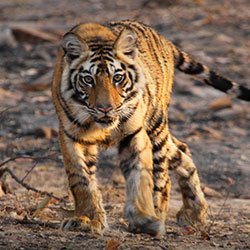
About Bandhavgarh National Park Bandhavgarh National Park, located in Umaria district of Madhya Pradesh, is one of the most popular national parks in India. It covers an area of 105 square kilometers and is known for its dense forest, hilly terrain, and rich biodiversity. The park is famous for its high population of Royal Bengal tigers and is a popular destination for wildlife enthusiasts and nature lovers. Location and Geographical Overview Bandhavgarh National Park is located in the Vindhya Hills of Madhya Pradesh, India. It is approximately 197 kilometers away from the city of Jabalpur and 35 kilometers from the town of Umaria. The park is spread across the tropical forests and grasslands of the region, with streams, rocky hills, and meadows making up its diverse landscape. Open and Closing Time The park remains open from October to June every year. The opening and closing timings of the park vary depending on the season. Generally, the park is open for visitors from 6:30 AM to 10:00 AM in the morning and from 3:00 PM to 6:00 PM in the evening. Entry Fee The entry fee for Bandhavgarh National Park varies for Indian and foreign nationals. For Indian visitors, the entry fee is INR 1500 per person, while for foreign nationals, the fee is INR 2500 per person. Additionally, there may be charges for vehicle entry and camera fees. Species-Flora/Fauna Availability Bandhavgarh National Park is home to a wide variety of flora and fauna. The park is known for its dense vegetation, including Sal trees, bamboo, and grasslands. The park is also home to numerous animal species, including the Royal Bengal tiger, Indian bison, leopard, sambar deer, and various species of birds and reptiles. Activities Performed Visitors to Bandhavgarh National Park can indulge in a range of activities, including jeep safaris, elephant safaris, bird watching, and nature walks. The park is ideal for wildlife photography and offers opportunities to witness the diverse wildlife in their natural habitat. Jeep Safari Charges The charges for jeep safari in Bandhavgarh National Park vary depending on the zone and the duration of the safari. On average, the cost of a jeep safari ranges from INR 4000 to INR 6000 per safari. It is advisable to book safari tickets in advance to avoid any last-minute hassles. Age Criterion and Entry Fee For entry into Bandhavgarh National Park, the age criteria and entry fees are as follows: Male Adults: 18-60 years, Entry Fee - INR 1500 Female Adults: 18-60 years, Entry Fee - INR 1500 Children (6-17 years): Entry Fee - INR 750 Senior Citizen Facilities Bandhavgarh National Park provides special facilities for senior citizens, including discounted entry fees, wheelchair access, and assistance from park staff. Senior citizens above the age of 60 can avail of these facilities by presenting valid identification documents. Best Time to Visit The best time to visit Bandhavgarh National Park is during the winter months from November to February when the weather is pleasant and the wildlife sightings are more frequent. However, the park remains open from October to June, allowing visitors to explore its beauty throughout the year. Nearby Places to Visit There are several places of interest near Bandhavgarh National Park that visitors can explore, including: Bandhavgarh Fort: An ancient fort located within the park premises Manpur Village: A nearby village known for its local culture and traditions Khajuraho Temples: A UNESCO World Heritage Site known for its intricate sculptures Vehicle Parking Facility Bandhavgarh National Park provides ample parking facilities for visitors who wish to bring their vehicles. There are designated parking areas near the park entrance where visitors can safely park their cars or bikes while they explore the park. Rules and Regulations Visitors to Bandhavgarh National Park are required to adhere to the following rules and regulations: Do not litter or disturb wildlife Do not feed or taunt animals Follow the instructions of park guides and officials Respect the natural environment and maintain silence during wildlife sightings How to Reach and Other Related Information Bandhavgarh National Park can be easily reached by road, rail, or air. The nearest airport is in Jabalpur, approximately 197 kilometers away from the park. Umaria is the nearest railway station, located 35 kilometers from the park. Visitors can also travel by road from nearby cities like Jabalpur, Katni, and Rewa to reach the park. For accommodation, there are several wildlife resorts and lodges near Bandhavgarh National Park that offer comfortable stay options for visitors. It is advisable to book accommodation in advance, especially during the peak tourist season. Overall, Bandhavgarh National Park is a must-visit destination for nature lovers and wildlife enthusiasts, offering a unique opportunity to witness the majestic Royal Bengal tigers in their natural habitat amidst the lush greenery of the park.
Explore More